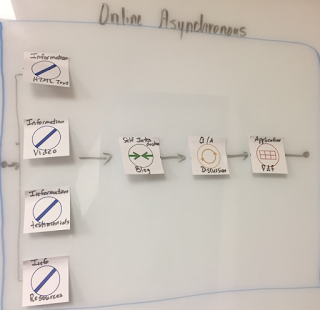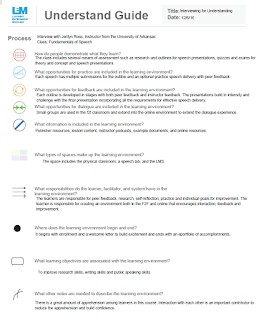The Learning Design Team’s primary responsibility is to
assist faculty as they design online, hybrid and self-paced online
courses. The completed course design
projects are evaluated using a quality rubric that consists of core elements
and five additional sections. With the
goal of passing the evaluation process with a minimum of 90%, the instructional
designers attempt to provide support that will make the design process simple
and efficient. In order to provide
consistent resources and information, the team is building an online resource
to provide the resources for each section in the rubric. The outcome is the production of the online
resource – Course Design Guide.

The strategy used to develop the
resources considered the needs faculty have from the moment of first interest
in designing a course, to the application process, and concluding with
submitting the finished project for evaluation.
Consideration is given to providing just-in-time resources, reducing duplication
of resources, eliminating or at least reducing differing interpretations of the
evaluation rubric.
The system includes face-to-face
meetings to communicate needs and expectations, continued asynchronous support in
the form of email and shared electronic resources, and continual updated
content for the Course Design Guide.
The experience has an impact both on the
faculty involved in the course design projects as well as members of the
instructional design team. The ability
to reference consistent support materials is an important part of the design
process. We have also discussed the
potential impact it could have for the faculty evaluators. They sometimes struggle to apply the rubric
outcomes to the assigned course evaluation.
The Course Design Guide can provide the additional explanation they need
to properly evaluate a course.
















